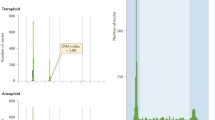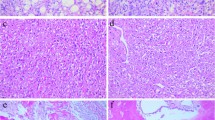Abstract
We determined nuclear DNA content from 308 archival paraffin-embedded malignant breast tumours and evaluated the survival of the patients by univariate and multivariate statistical analyses. The overall 8-year survival rate of stage I-III breast cancer patients was 74.3% in DNA-diploid and 51.2% in DNA-aneuploid tumours (P less than 0.0001). DNA ploidy had prognostic significance in both node-negative and node-positive breast cancer, primarily in cases with steroid receptor-positive tumours. In a Cox multivariate analysis DNA ploidy (P = 0.001), primary tumour size (P = 0.0007), nodal status (P = 0.04) and the content of progesterone receptors (P = 0.0008) emerged as significant independent prognostic factors, whereas oestrogen receptor status, age and menopausal status of the patients had no significant independent prognostic value. If the histological grade of ductal carcinomas was also included in the Cox model, both grade and DNA ploidy had independent prognostic effect. In conclusion, our results indicate that the analysis of DNA ploidy is a useful adjunct in the assessment of prognosis for breast cancer patients.
Similar content being viewed by others
Author information
Authors and Affiliations
Rights and permissions
About this article
Cite this article
Kallioniemi, OP., Blanco, G., Alavaikko, M. et al. Tumour DNA ploidy as an independent prognostic factor in breast cancer. Br J Cancer 56, 637–642 (1987). https://doi.org/10.1038/bjc.1987.258
Issue Date:
DOI: https://doi.org/10.1038/bjc.1987.258
- Springer Nature Limited
This article is cited by
-
Significance of flow cytometric DNA analysis from freshly aspirated samples
Breast Cancer (1995)
-
Prognostische relevanz von mutiertem P53-Protein und DNA-Flußzytometrie beim Mammakarzinom
European Surgery (1995)
-
DNA ploidy and S-phase fraction in medullary carcinoma of the breast -a flow cytometric analysis using archival material
Breast Cancer Research and Treatment (1994)
-
Association of immunohistochemical p53 tumor suppressor gene protein overexpression with prognosis in highly proliferative human mammary adenocarcinomas
World Journal of Surgery (1994)
-
DNA ploidy, S-phase, and steroid receptors in more than 127,000 breast cancer patients
Breast Cancer Research and Treatment (1993)




